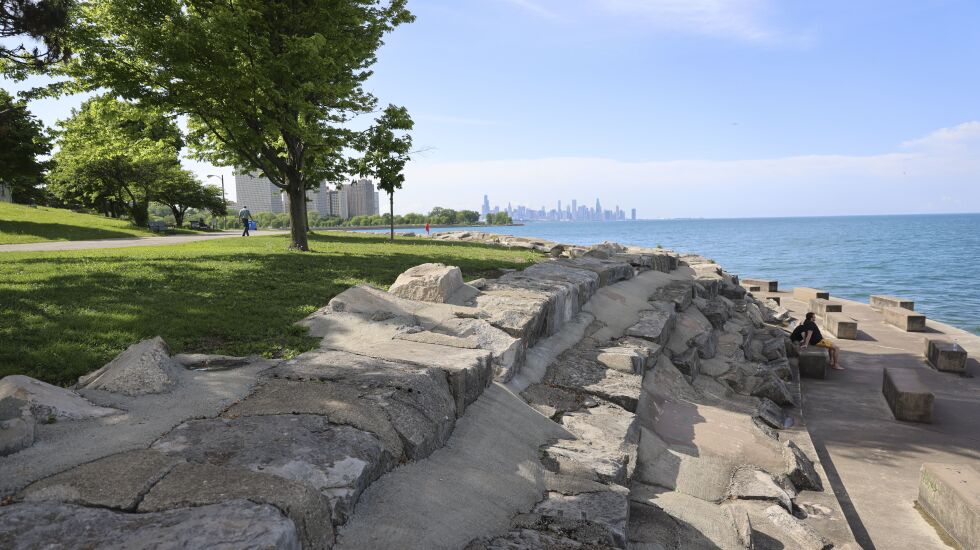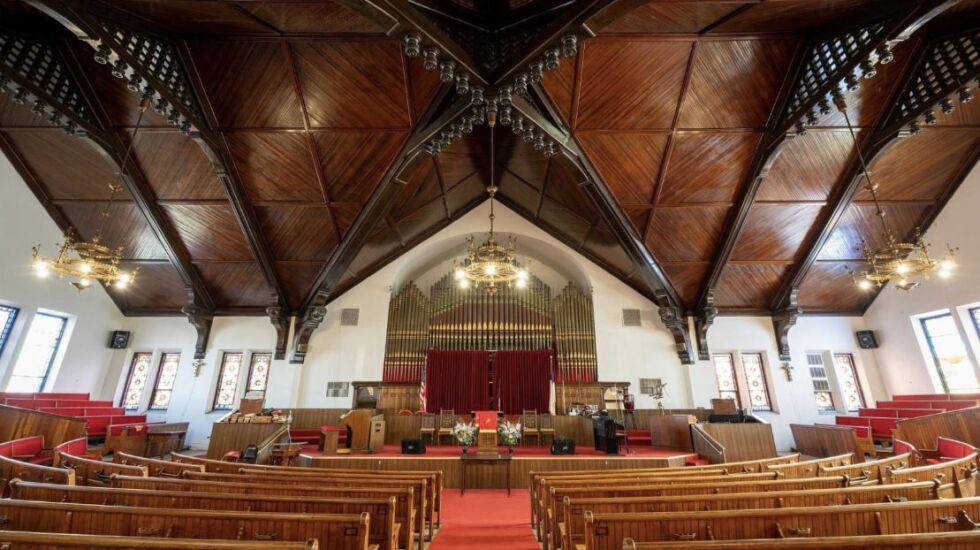
Promontory Point, beloved by generations of Chicagoans, has moved one step further toward protected status.
The Commission on Chicago Landmarks unanimously recommended Thursday that the South Side lakefront oasis becomes an official city landmark.
“This fight has been going on for a very long time,” 10th Ward Ald. Sue Sadlowski Garza said at the landmark commission meeting. “I can remember bumper stickers in the ’90s: ‘Save the Point.’”
Sites designated as city landmarks cannot be demolished by the city. Recently, some new landmarks have garnered city funding for partial restoration.
Promontory Point was designed by Chicago Park District lead architect Emanuel Buchsbaum and landscape architect Alfred Caldwell, a Prairie School disciple influenced by Frank Lloyd Wright. Caldwell also designed the lily pond in Lincoln Park.
Caldwell wanted the point to show “a sense of space and a sense of the power of nature and the power of the sea,” according to a report submitted to the commission.
The 40-acre green space at the tip of Burnham Park was built between 1922 and 1939 and has been the setting for hundreds of community gatherings, family picnics and YMCA outings.
During the Cold War, the city built radar towers on the point to support a Nike missile installation in Jackson Park to defend Chicago from attacks. After backlash from community groups, the base was dismantled in the 1970s.
Promontory Point “is such a glorious, organic and historic place to be in fellowship with people from all over the city of Chicago,” said Mary Lu Seidel, director of community engagement at Preservation Chicago.
The seawall at Promontory Point, protecting the site from Lake Michigan, includes the last original limestone revetments standing in the city, according to the report.
The point reemerged as a community gathering space during the peak of the COVID-19 pandemic, especially for swimmers, said Hyde Park resident Elizabeth Winkler.
“People would come from the suburbs, from the North Side, from the West Side, and they would all gather at the point because it’s just such a special place,” Winkler said.
Promontory Point is currently owned by the Chicago Park District. Ald. Leslie Hairston (5th) was among hundreds of residents who sent letters calling for landmark status for Promontory Point.
Some residents have been fighting to make the point a landmark for more than 20 years, she said, and the Chicago Park District hasn’t always been fully on board.
“This has been a 22-year effort because the park district proposed getting rid of the limestone revetment and replacing it with concrete, and that is when the community joined together,” Hairston said.
Despite debate around older plans involving steel and concrete, the park district now supports keeping as much limestone as possible if the City Council finalizes the point as a landmark, said Heather Gleason, the park district’s director of planning and development.
A federal defense bill passed in December requires the Army Corps of Engineers — another group sharing jurisdiction over the point — to support the locally preferred plan for restoration.
“We very well understand the community’s long fight to keep the limestone,” Gleason said.
The City Council Subcommittee on Zoning, Landmarks and Building Standards could weigh in on the point as soon as March, with a potential final vote by the City Council in April, said city project coordinator Kandalyn Hahn.

During Thursday’s meeting, the former home of Chicago architect Walter Netsch — an unusual Old Town structure laid out like a pinwheel on the inside, which Netsch designed in the 1970s — was approved for a committee vote on landmark status. Netsch died in 2008.

The commission also moved toward landmark status for Greater Union Baptist Church, a 137-year-old brick and terra cotta West Side church that doubled as a popular lecture hall during the Progressive era.







